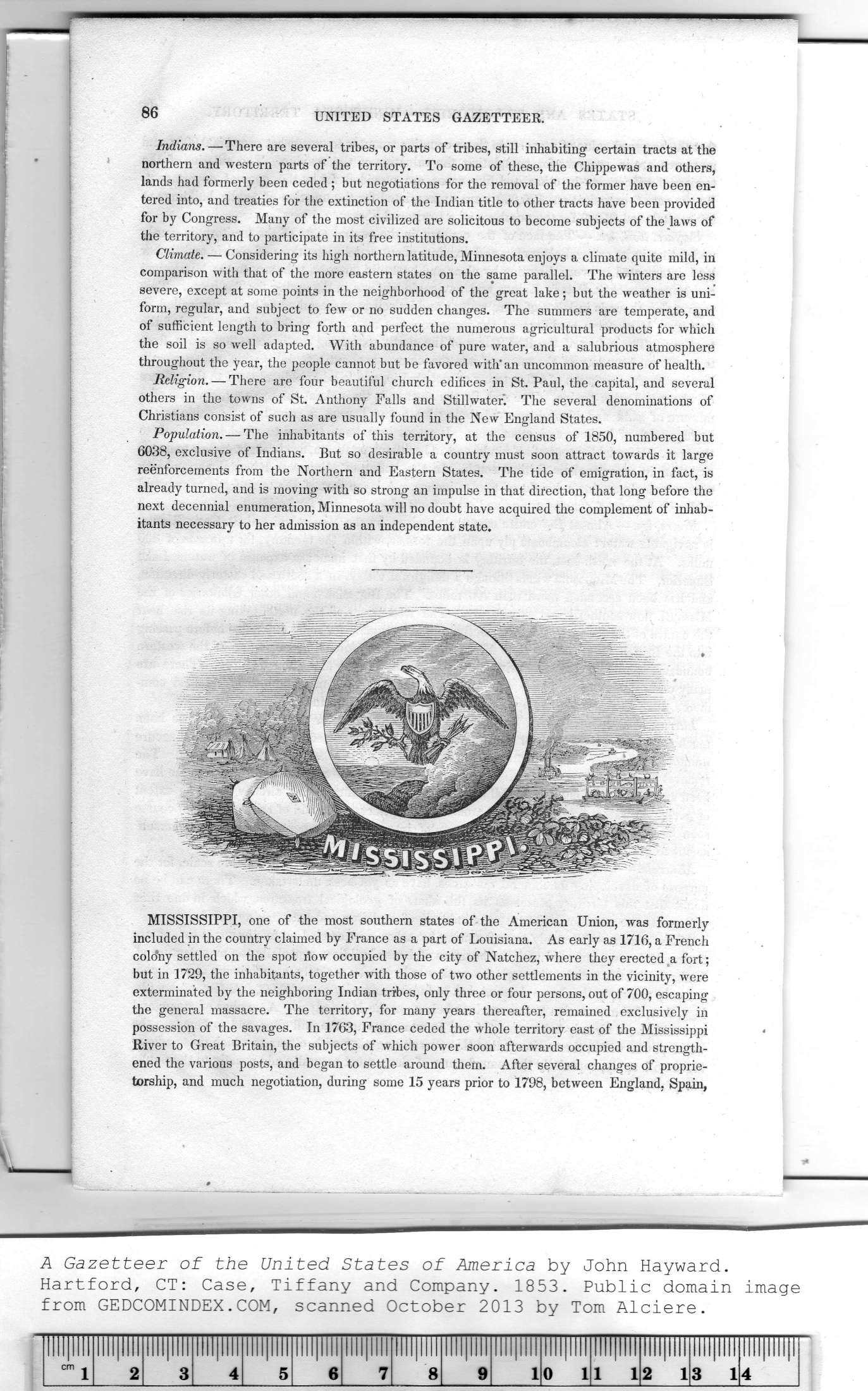|
|
Note: Ctrl and + increases the font size of the text below, Ctrl and - decreases it, and Ctrl and 0 resets it to default size.
86 UNITED STATES GAZETTEER.
Indians.—There are several tribes, or parts of tribes, still inhabiting certain tracts at the
northern and western parts of the territory. To some of these, the Chippewas and others,
lands had formerly been ceded ; but negotiations for the removal of the former have been en-
tered into, and treaties for the extinction of the Indian title to other tracts have been provided
for by Congress. Many of the most civilized are solicitous to become subjects of the laws of
the territory, and to participate in its free institutions.
Climate. — Considering its high northern latitude, Minnesota enjoys a climate quite mild, in
comparison with that of the more eastern states on the same parallel. The winters are less
severe, except at some points in the neighborhood of the great lake; but the weather is uni-
form, regular, and subject to few or no sudden changes. The summers are temperate, and
of sufficient length to bring forth and perfect the numerous agricultural products for which
the soil is so well adapted. With abundance of pure water, and a salubrious atmosphere
throughout the year, the people cannot but be favored with"an uncommon measure of health.
Religion. — There are four beautiful church edifices in St. Paul, the capital, and several
others in the towns of St. Anthony Falls and Stillwater. The several denominations of
Christians consist of such as are usually found in the New England States.
Population. — The inhabitants of this territory, at the census of 1850, numbered but
6038, exclusive of Indians. But so desirable a country must soon attract towards it large
reenforcements from the Northern and Eastern States. The tide of emigration, in fact, is
already turned, and is moving with so strong an impulse in that direction, that long before the
next decennial enumeration, Minnesota will no doubt have acquired the complement of inhab-
itants necessary to her admission as an independent state.
MISSISSIPPI, one of the most southern states of the American Union, was formerly
included in the country claimed by France as a part of Louisiana. As early as 1716, a French
colony settled on the spot ilow occupied by the city of Natchez, where they erected a fort;
but in 1729, the inhabitants, together with those of two other settlements in the vicinity, were
exterminated by the neighboring Indian tribes, only three or four persons, out of 700, escaping
the general massacre. The territory, for many years thereafter, remained exclusively in
possession of the savages. In 1763, France ceded the whole territory east of the Mississippi
River to Great Britain, the subjects of which power soon afterwards occupied and strength-
ened the various posts, and began to settle around them. After several changes of proprie-
torship, and much negotiation, during some 15 years prior to 1798, between England, Spain,
A Gazetteer of the United States of America by John Hayward.
Hartford, CT: Case, Tiffany and Company. 1853. Public domain image
|
